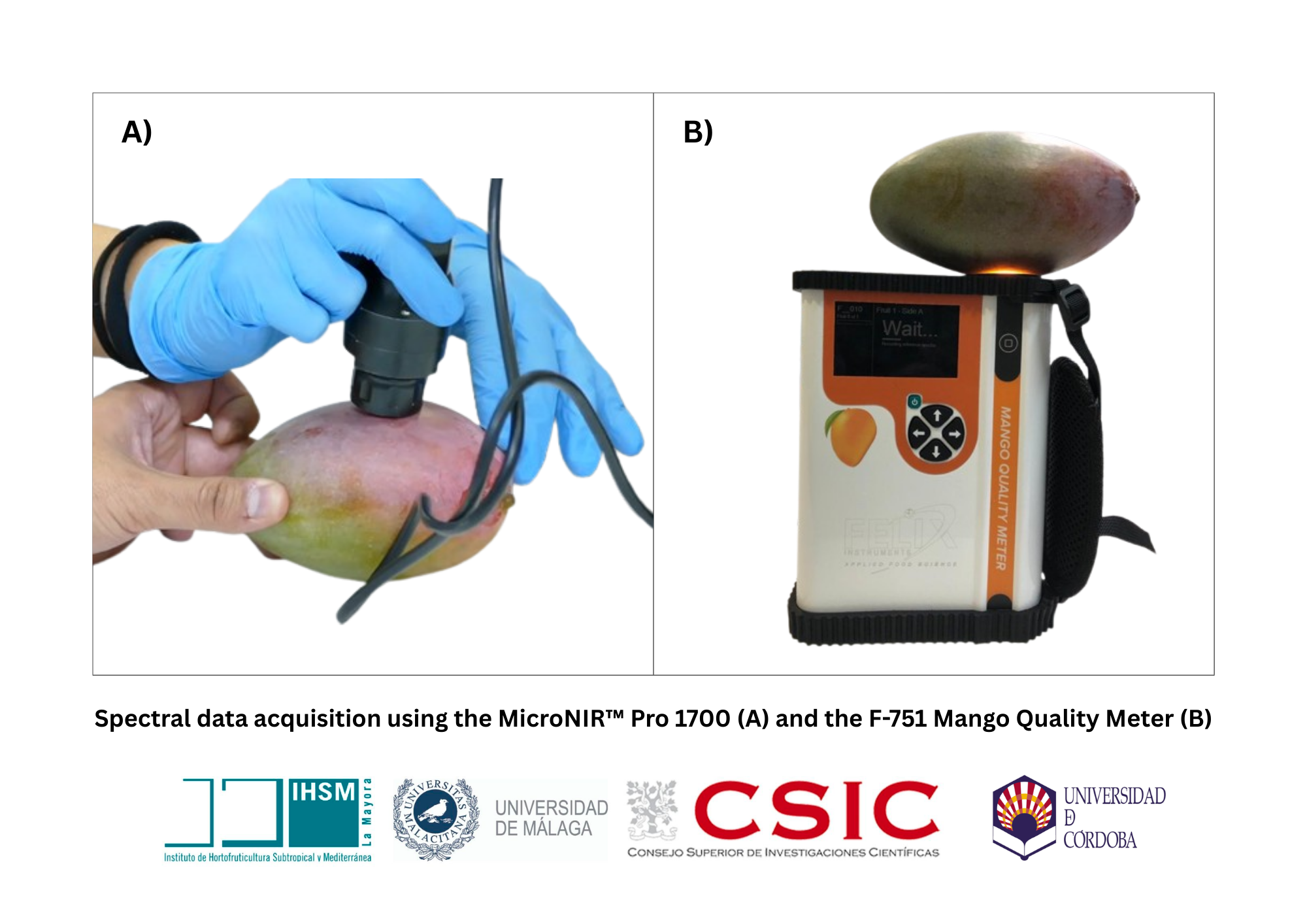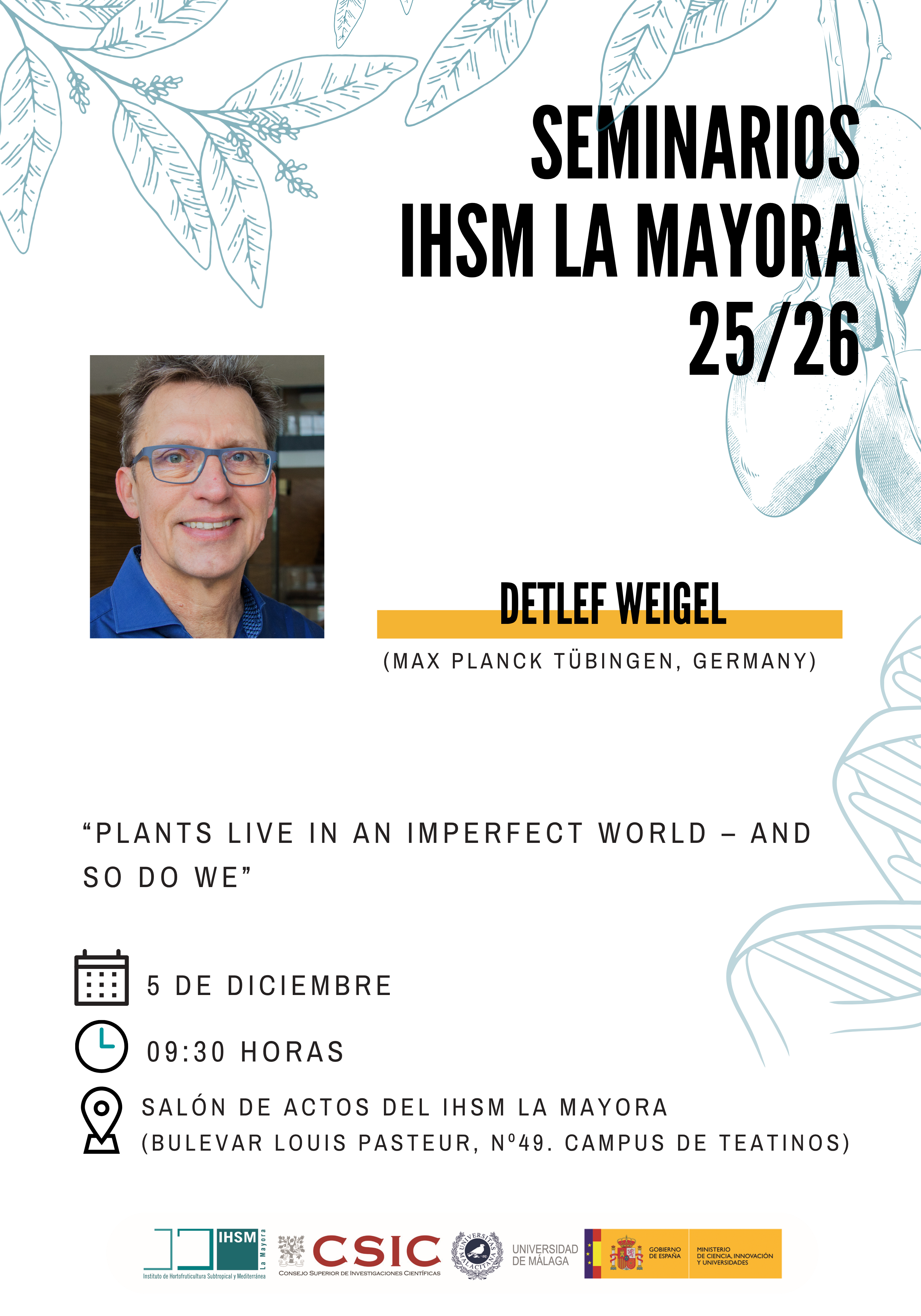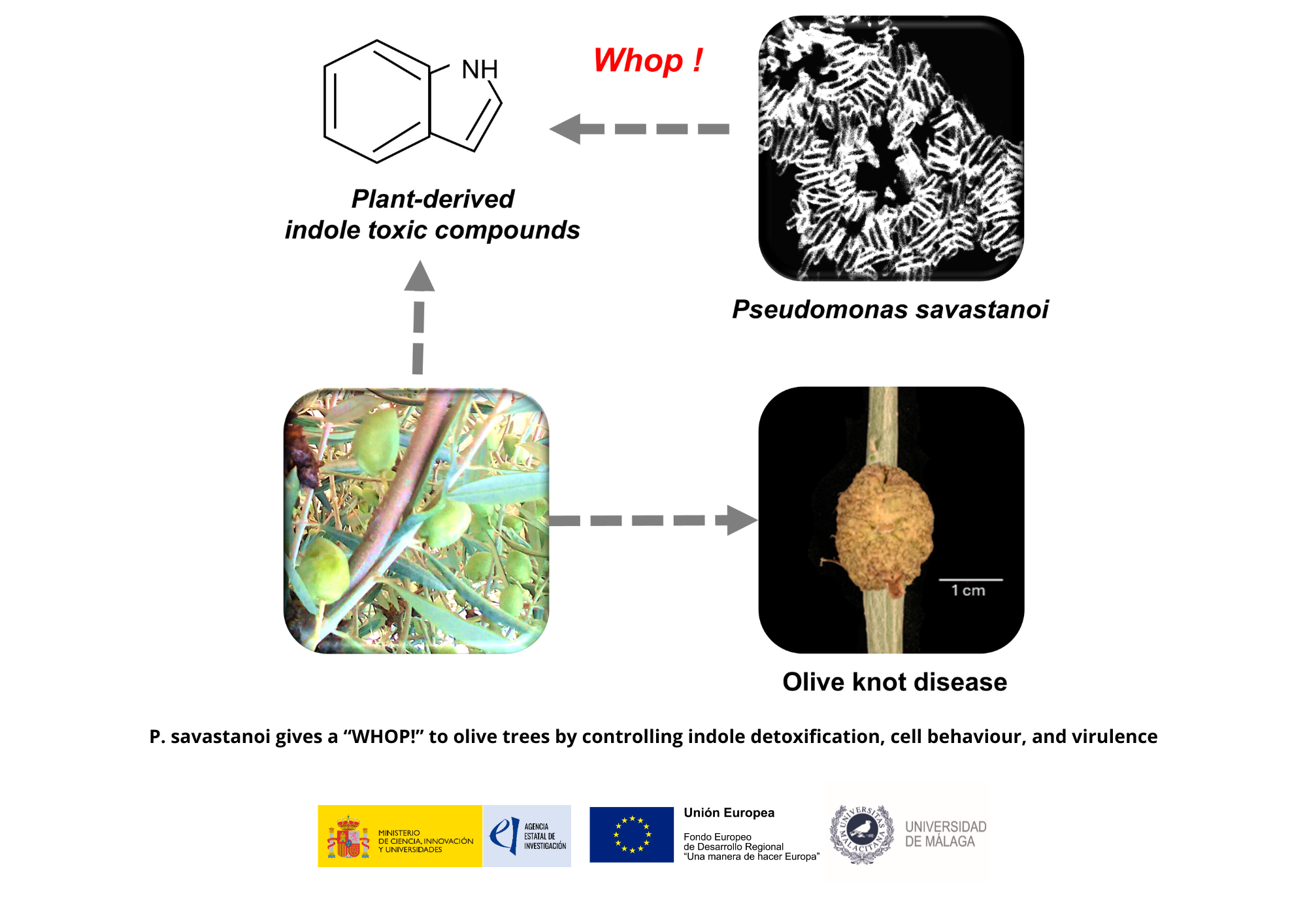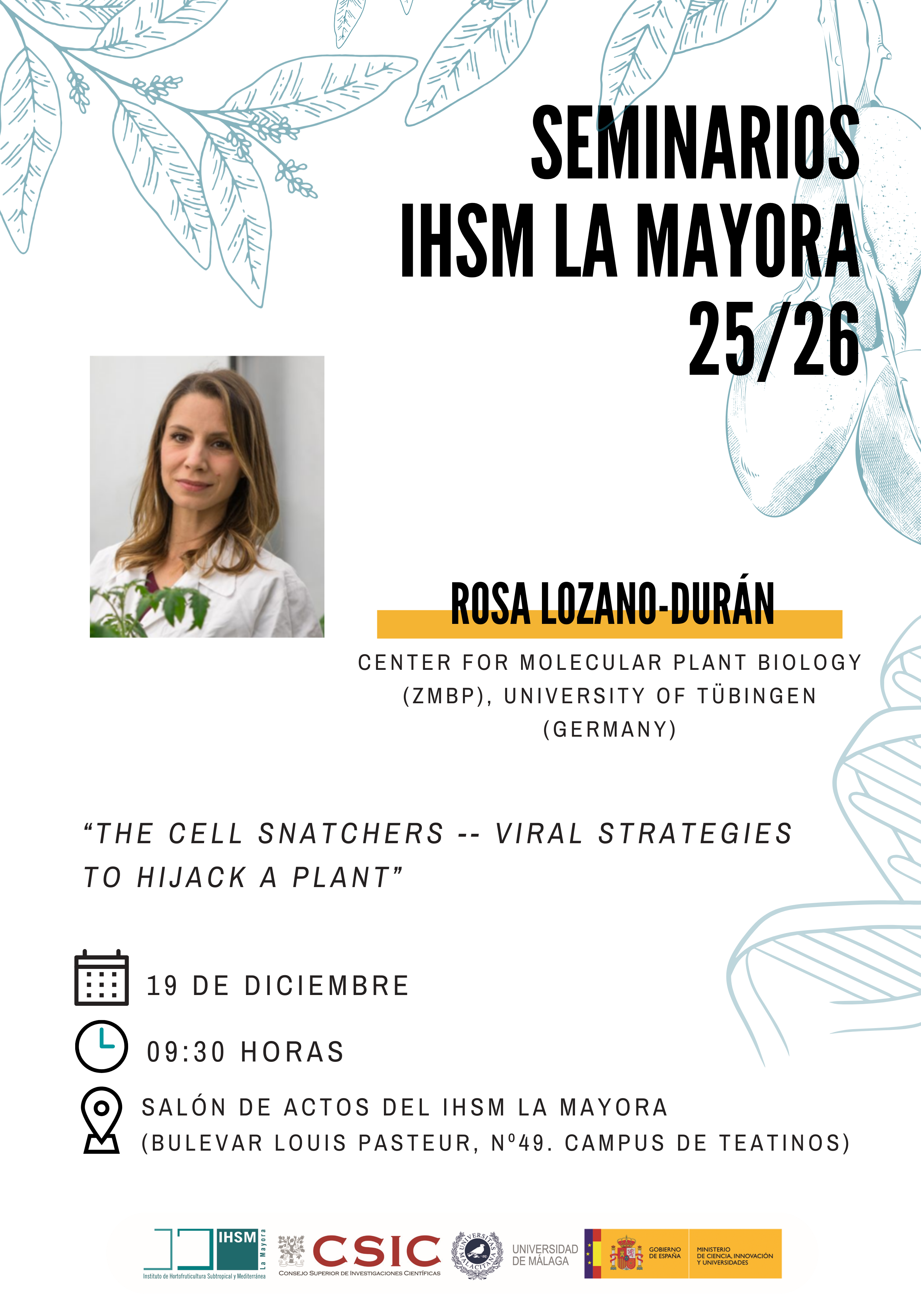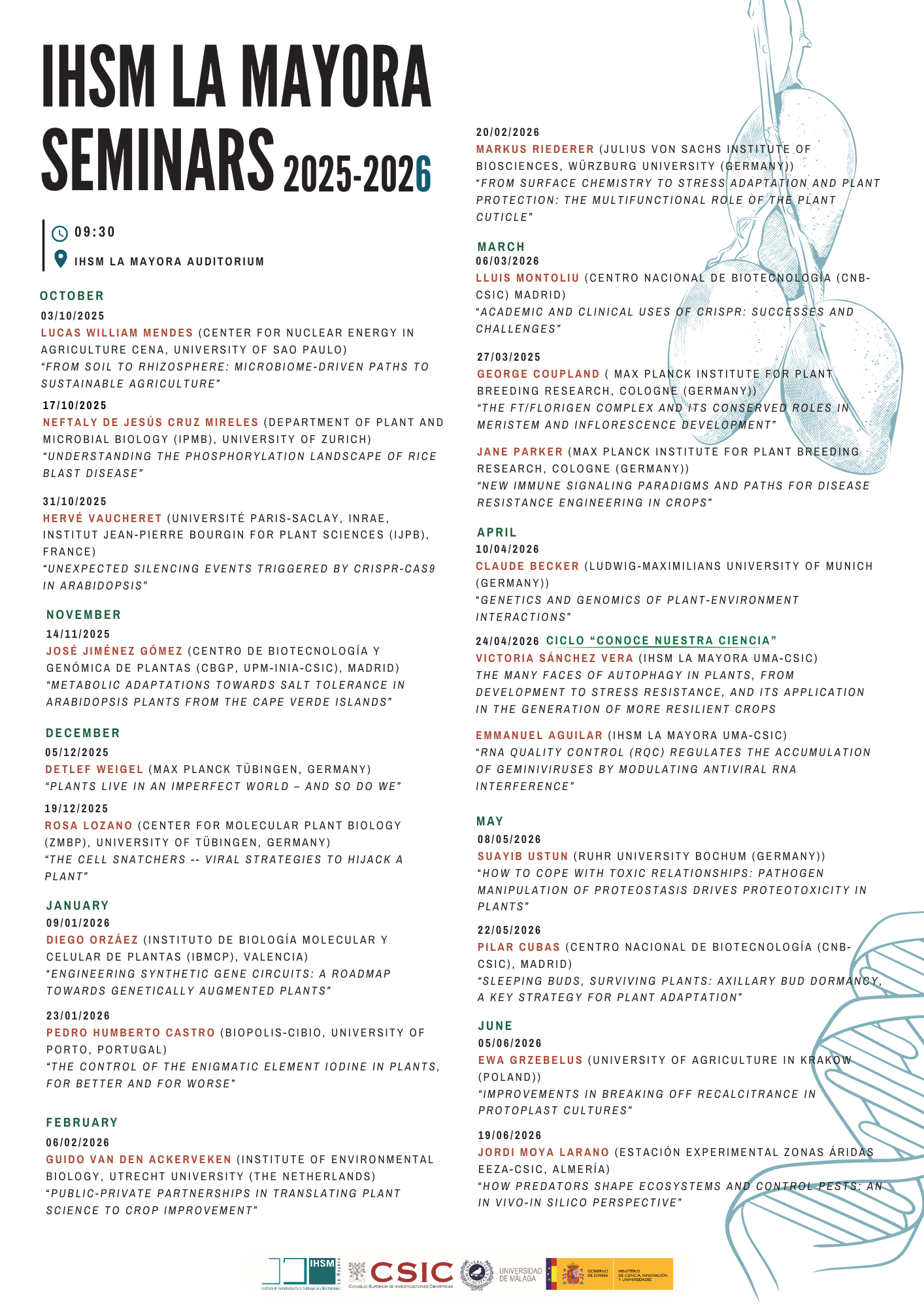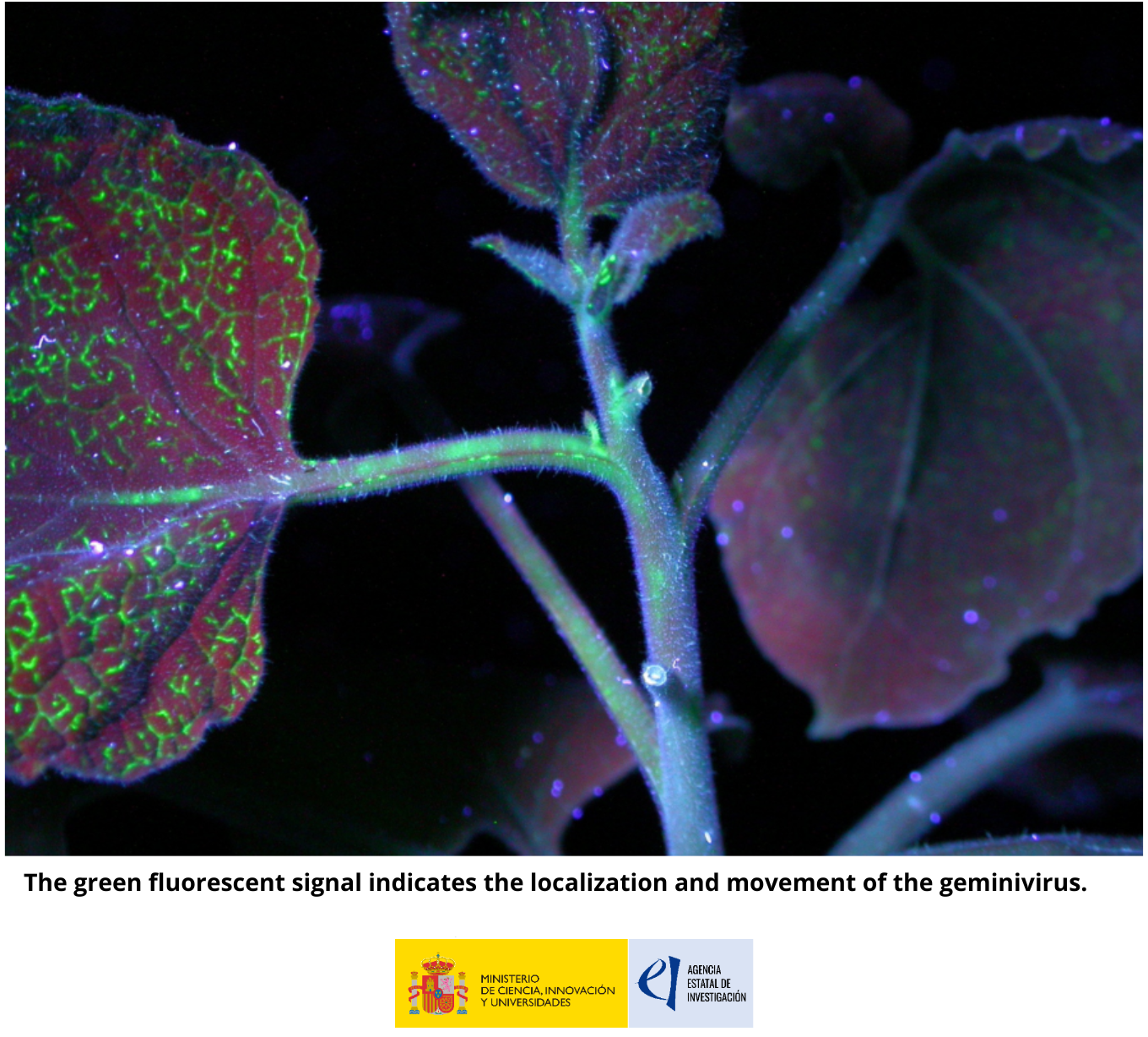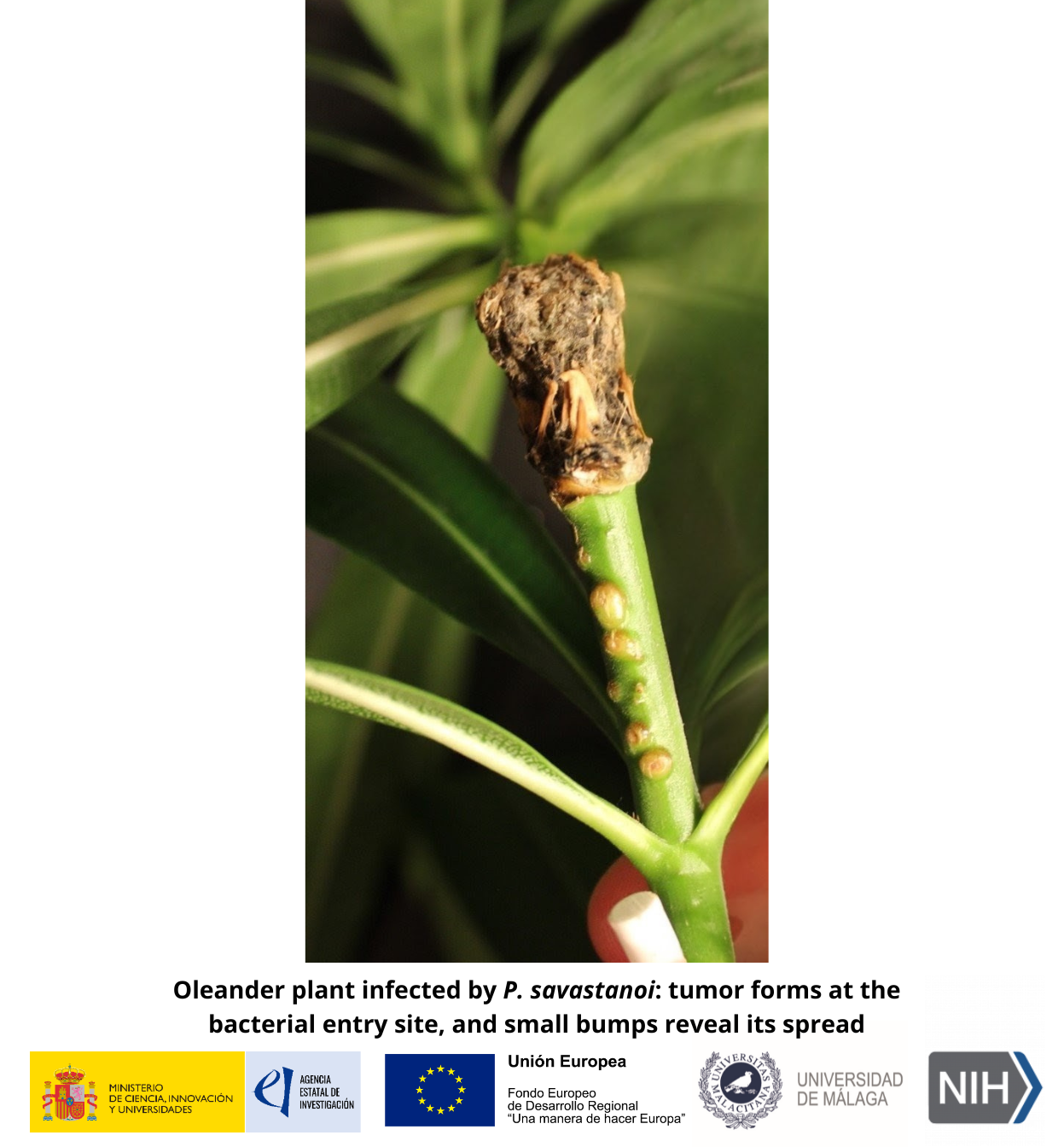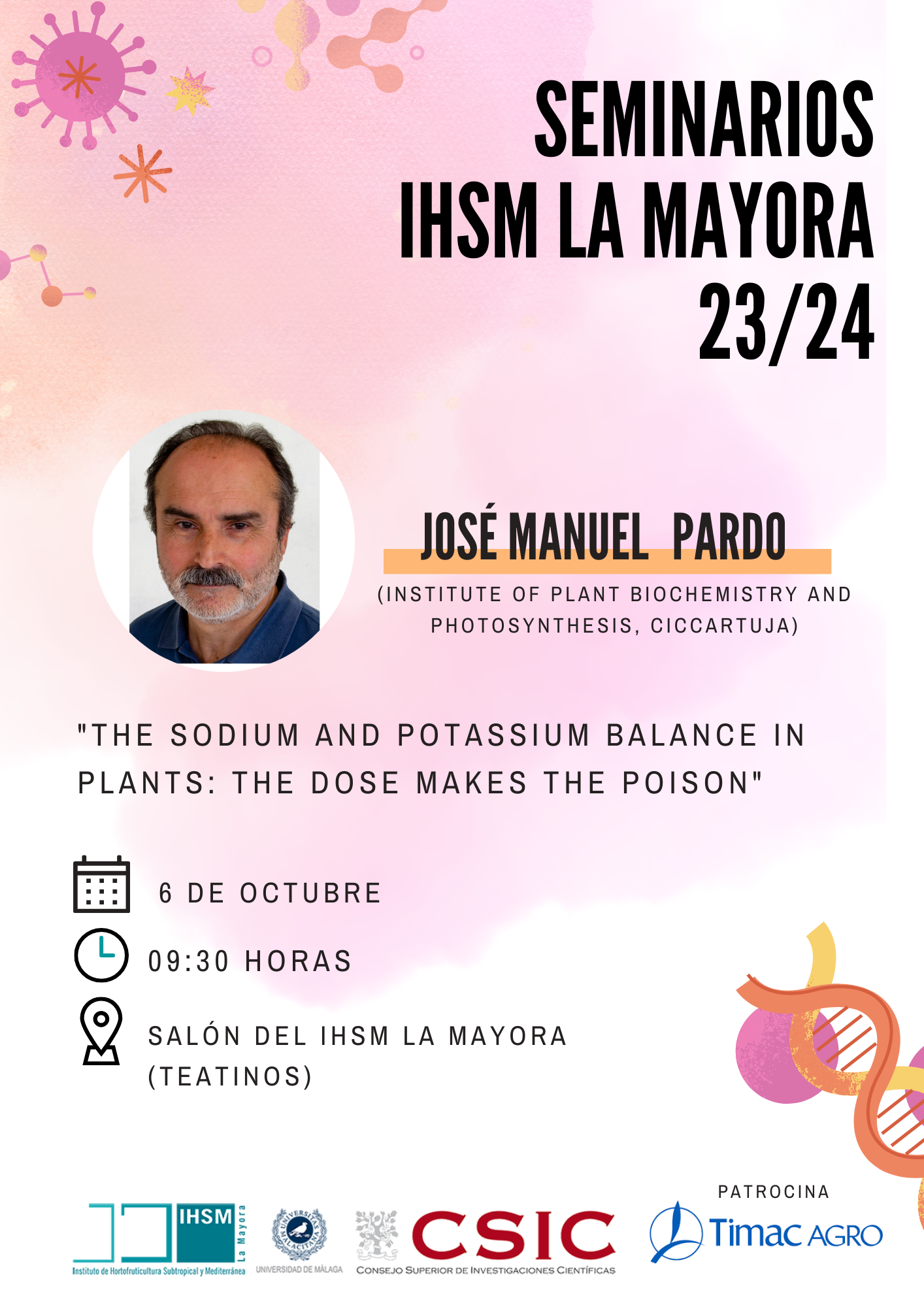
Seminarios IHSM La Mayora - José Manuel Pardo (Institute of Plant Biochemistry and Photosynthesis, cicCartuja)
Although the elements sodium (Na) and potassium (K) are equally abundant in the Earth's crust, their concentrations in cells are very different. All organisms prefer to accumulate K to regulate ionic strength, turgor and cellular pH, while avoiding the accumulation of Na. In plants, poisoning by excess Na is the main deleterious component of salinity. To protect themselves, plants posses a network of ionic transporters and regulators, among which the SOS (Salt-Overtly Sensitive) pathway stands out for its functional importance. The main component is the Na-transporting protein SOS1, which promotes the extrusion of root Na to the medium and xylem loading for the distribution of Na with shoots and dilution by growth. On the other hand, K uptake requires a complex and redundant system of ion transporters that allows nutrition under a wide range of K availability conditions, and even capturing all the K available in the medium. However, this avidity of plants for K can lead to poisoning, especially when K uptake is uncoupled from the distribution between tissues and the accumulation of K into vacuoles. Interestingly, under conditions of K deficiency many plants choose to actively accumulate Na to replace K in osmoregulatory functions. Thus, the distinction between nutrient and toxic is blurred and brings to mind the Paracelsus' statement that 'The dose makes the poison'.

